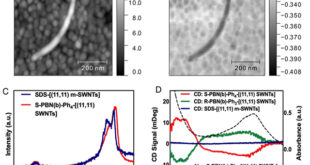Significance
Transition-metal dichalcogenides (TMDs) are a family of two-dimensional materials composed of a transition metal atom (such as molybdenum or tungsten) and two chalcogen atoms (such as sulfur or selenium). They have a layered structure with weak van der Waals interactions between the layers and can be exfoliated down to a single- or few-layer thickness. TMDs continue to attract significant research attention due to their layered architecture and fascinating properties emanating from their two-dimensional structures. TMDs have unique electronic and optical properties due to their two-dimensional nature and the presence of a bandgap, which allows for efficient light emission and absorption. They have been extensively studied for applications in electronics, optoelectronics, catalysis, and energy storage. One of the most popular methods for tuning the properties of TMDs is by incorporating foreign ions or atoms, which either intercalate between layers or substitute in TMD structure. As a result, the material properties can be controlled by varying the amount of intercalation or substitution.
During the synthesis of TMDs with incorporated guest species, it is commonly assumed that many factors like precursor evaporation rate, the composition of the compound powder or elemental sources, and the growth conditions control the extent of substitution and intercalation. However, such assumptions may not be valid in systems where guest species are similar in size or valence to chalcogen or metal. Additionally, a linear variation in the lattice parameter changes is used as evidence of guest species incorporation, but the effect of substitution or intercalation on lattice parameters is not well distinguished.
In order to solve this puzzle, it is important to obtain the extent of substitution and/or intercalation by characterizing the composition of the final products, which remains a challenge with existing methods. Investigating the extent of intercalation or substitution and associating the type of guest species incorporation with the structural changes induced would lead to insight on structure-property relationships in TMDs. Thus, developing a robust method for determining the distribution of substituted or intercalated ions in TMDs is important in enhancing the properties of these materials.
Herein, PhD candidate Mellie Lemon, Dr. Renae Gannon, and Professor David Johnson from the University of Oregon in collaboration with Dr. Samuel Richard Battey, Dr. Ping Lu and Dr. Sven Rudin from Los Alamos National Laboratory, and Dr. Brian Toby from Argonne National Laboratory presented a novel approach combining multiple advanced techniques to determine the amount of intercalation and/or substitution in TMDs. These methods included X-ray reflectivity (XRR), X-ray diffraction (XRD), and X-ray fluorescence spectroscopy (XRF) measurements. The amount of intercalation and/or substitution was determined using the obtained information regarding the amount of each element, the number of unit cells, and the number of impurity phases present. Their research work is currently published in the journal, Chemistry of Materials.
The research team characterized the FexVSe2 and Fe1-xVxSe2 samples to demonstrate the utility of this approach. Due to the presence of Laue oscillations, it was possible to determine the number of unit cells in the coherently diffracting domain (CDD). The thickness of the CDD was obtained by multiplying the c-axis lattice parameter with the number of unit cells obtained. The resulting thickness was comparable to the total thickness calculated using the XRR data.
Additionally, the authors concluded that the number of atoms of each element calculated from the XRF data was representative of the number of atoms in the crystalline domain attributed to the small difference between the CDD thickness and the total film thickness. Furthermore, the amount of metal and selenium atoms required to form the calculated number of unit cells in the crystalline domain could be determined from the in-plane lattice parameters.
In summary, the study demonstrated a more effective and robust method for characterizing the site and amount of foreign atom incorporation in TMDs, successfully overcoming the challenges of existing methods. The extent of substitution obtained via XRR, XRD and XRF data was independently supported by electron microscopy and Rietveld refinements of diffraction patterns. In a statement to Advances in Engineering, corresponding author, Professor David Johnson explained their findings would advance our understanding of the distribution of substituted or intercalated ions in TMDs.
Reference
Lemon, M., Gannon, R. N., Lu, P., Battey, S. R., Rudin, S. P., Toby, B. H., & Johnson, D. C. (2022). Method to Determine the Distribution of Substituted or Intercalated Ions in Transition-Metal Dichalcogenides: FexVSe2 and Fe1-xVxSe2. Chemistry of Materials, 34(19), 8528–8535.
 Advances in Engineering Advances in Engineering features breaking research judged by Advances in Engineering advisory team to be of key importance in the Engineering field. Papers are selected from over 10,000 published each week from most peer reviewed journals.
Advances in Engineering Advances in Engineering features breaking research judged by Advances in Engineering advisory team to be of key importance in the Engineering field. Papers are selected from over 10,000 published each week from most peer reviewed journals.

